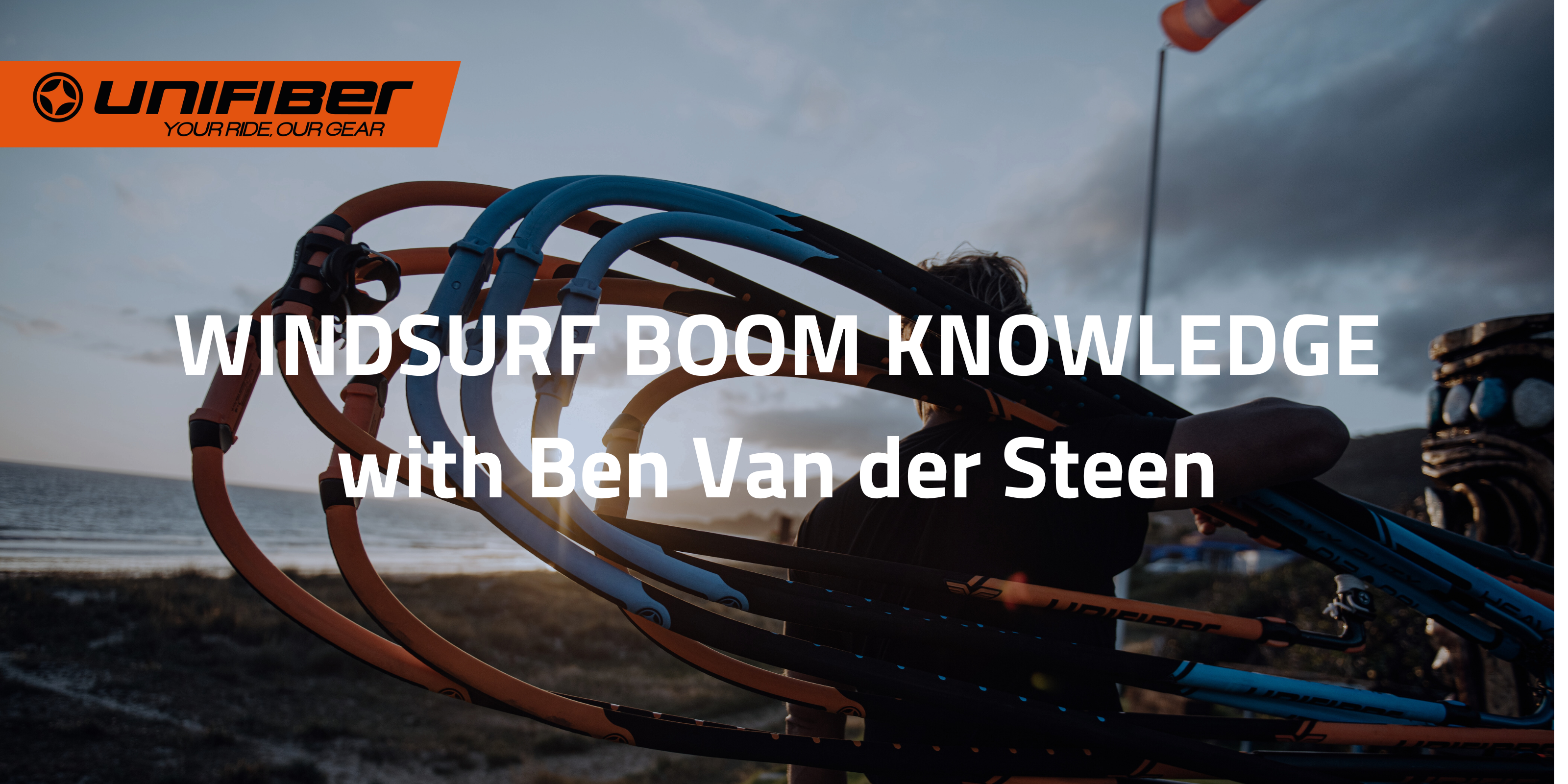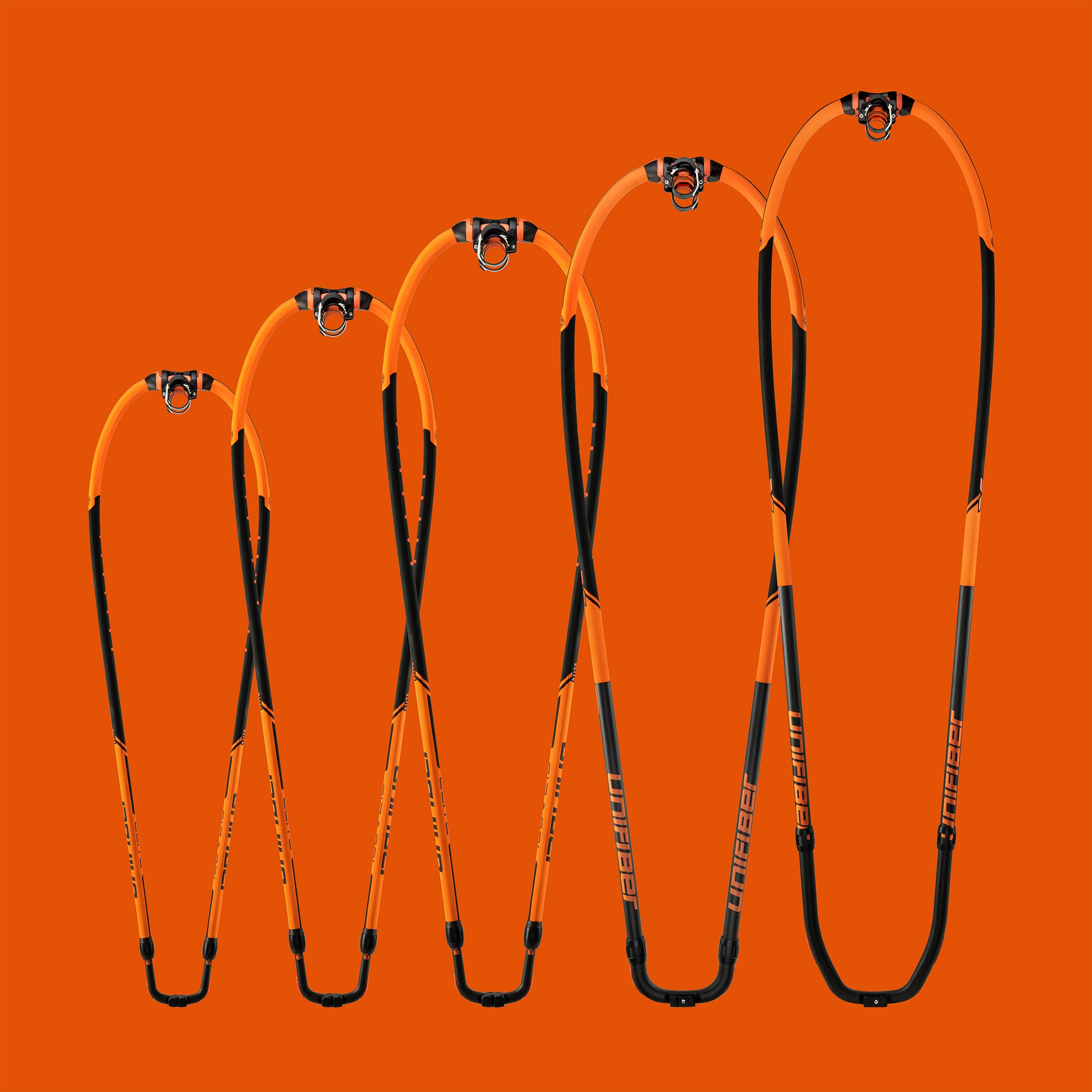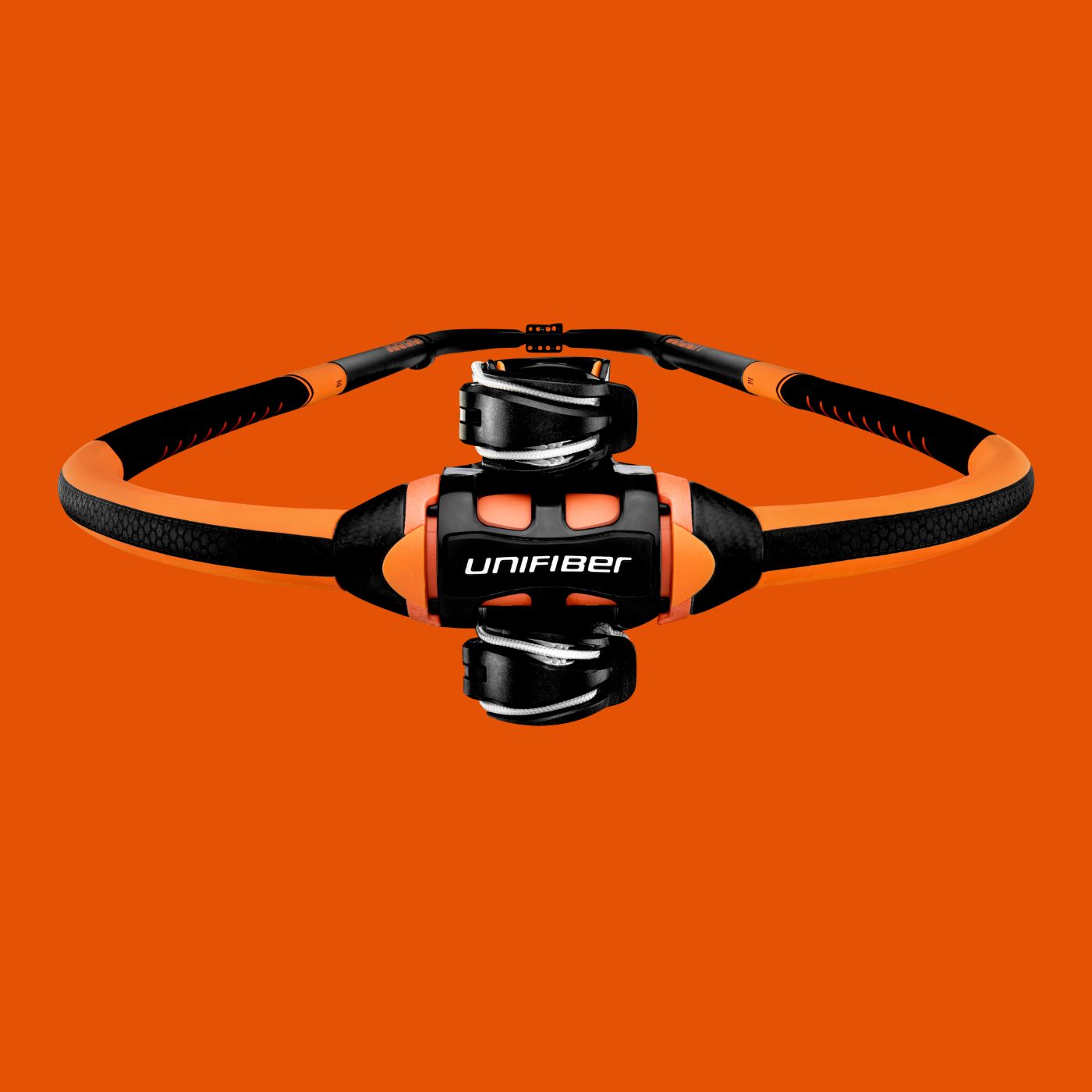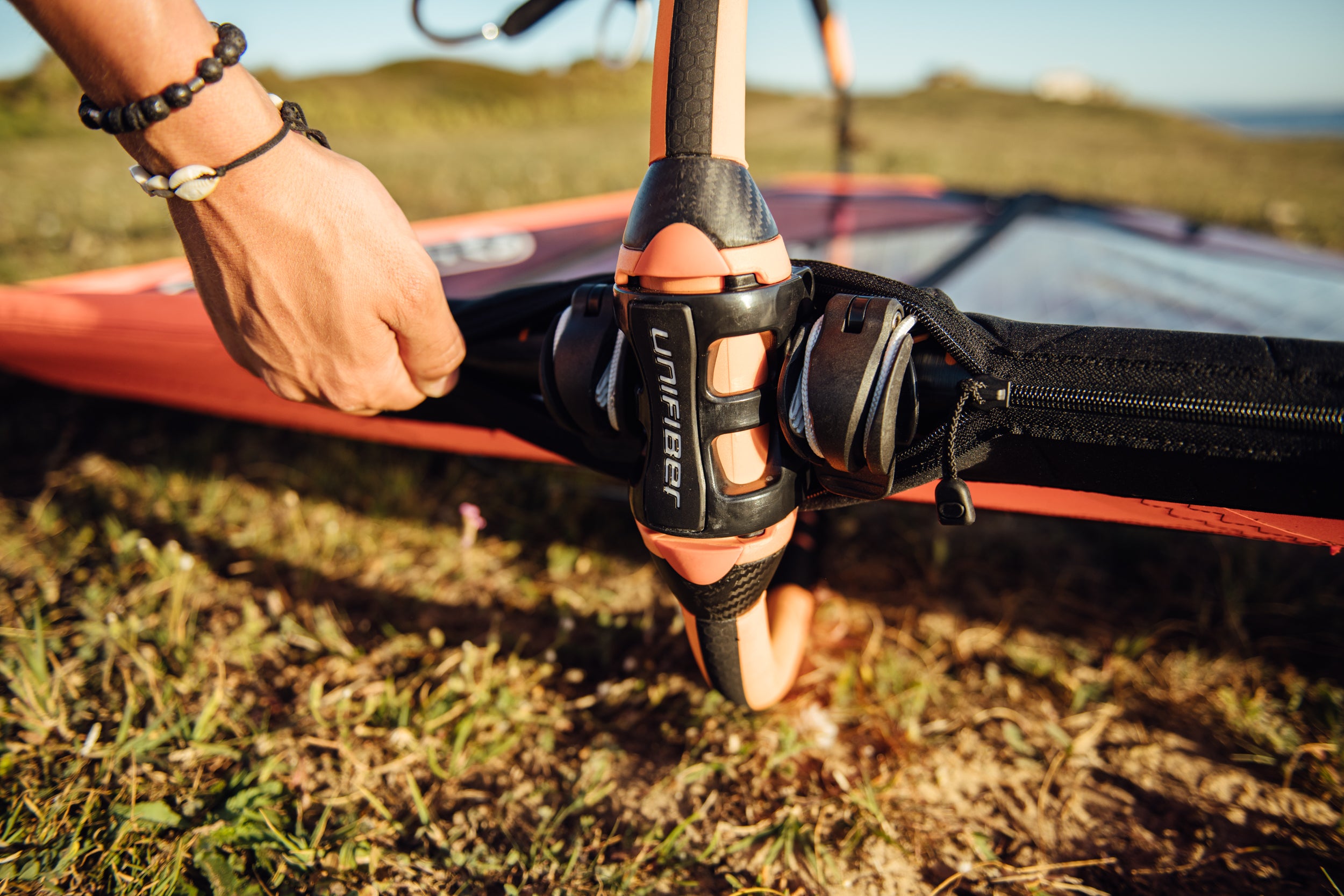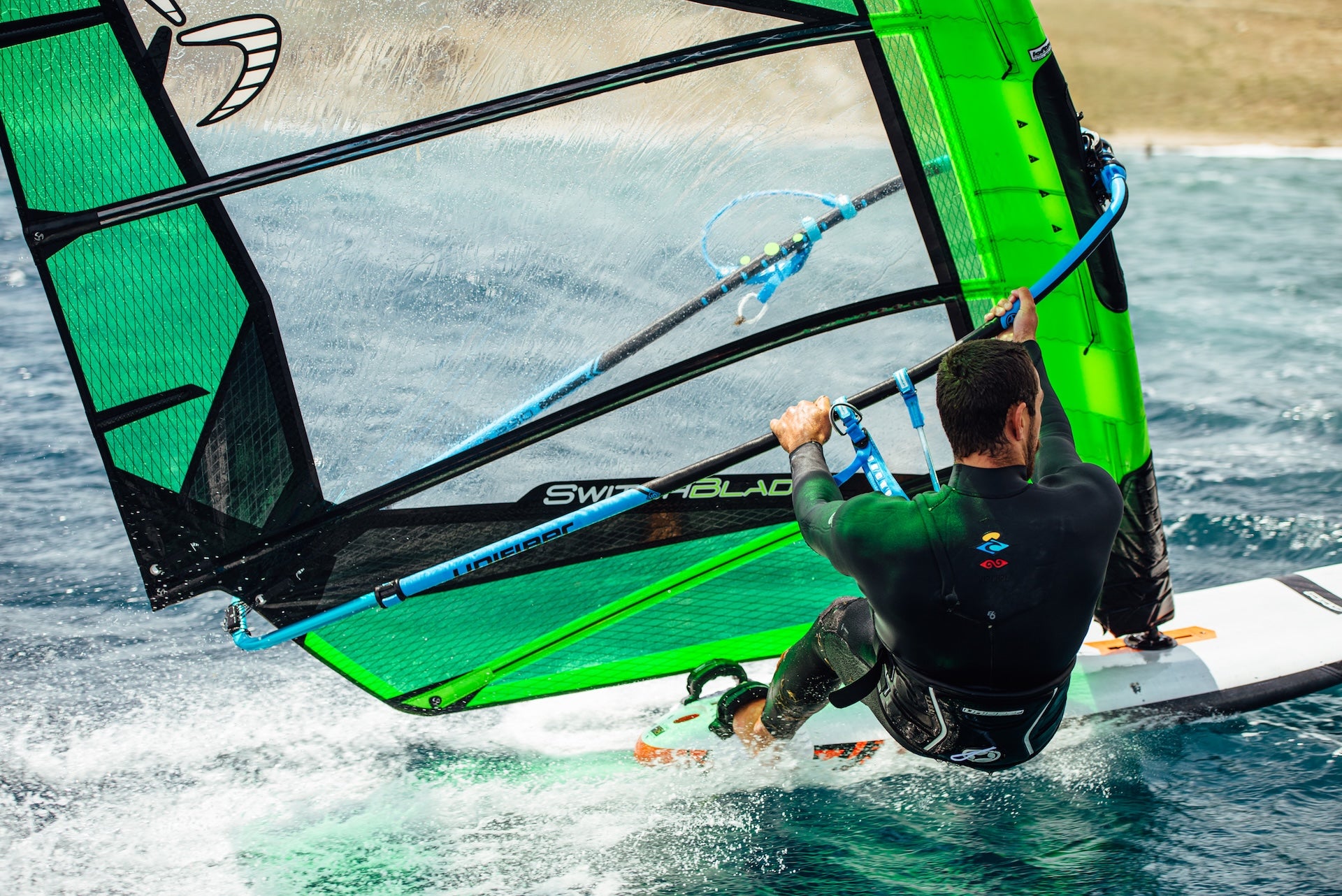Explore Our Boom Collections
At Unifiber, we don’t just make booms—we design them from the ground up.
Experience the ultimate combination of power, precision, and comfort with Unifiber's cutting-edge windsurf booms. Whether you're a seasoned pro or a passionate beginner, our comprehensive range has the perfect boom to take your sailing to new heights.
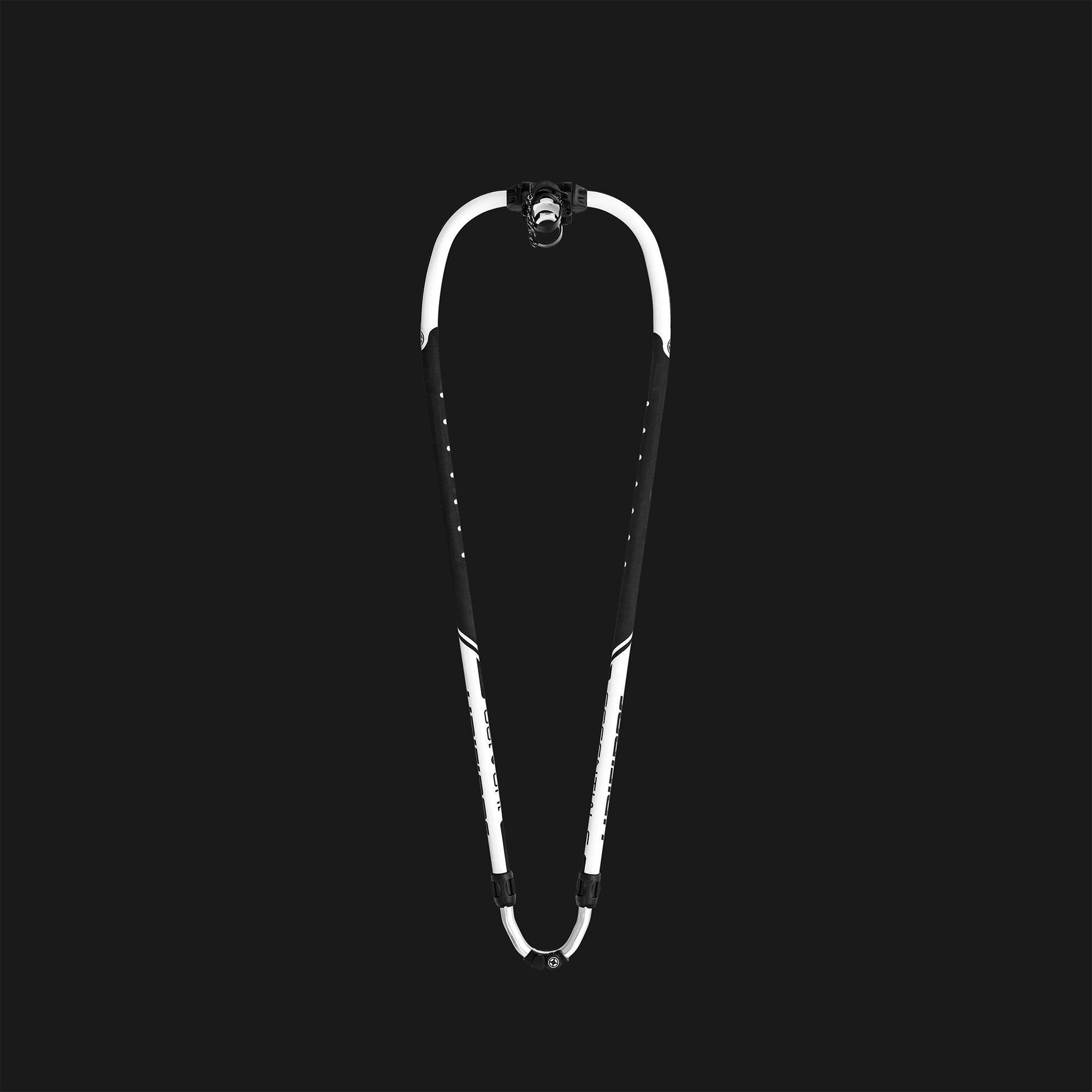
Essentials Jr
Our lightest boom, built for younger riders. Slim 26mm grip and T8 alloy construction for comfort and durability.
From 129€
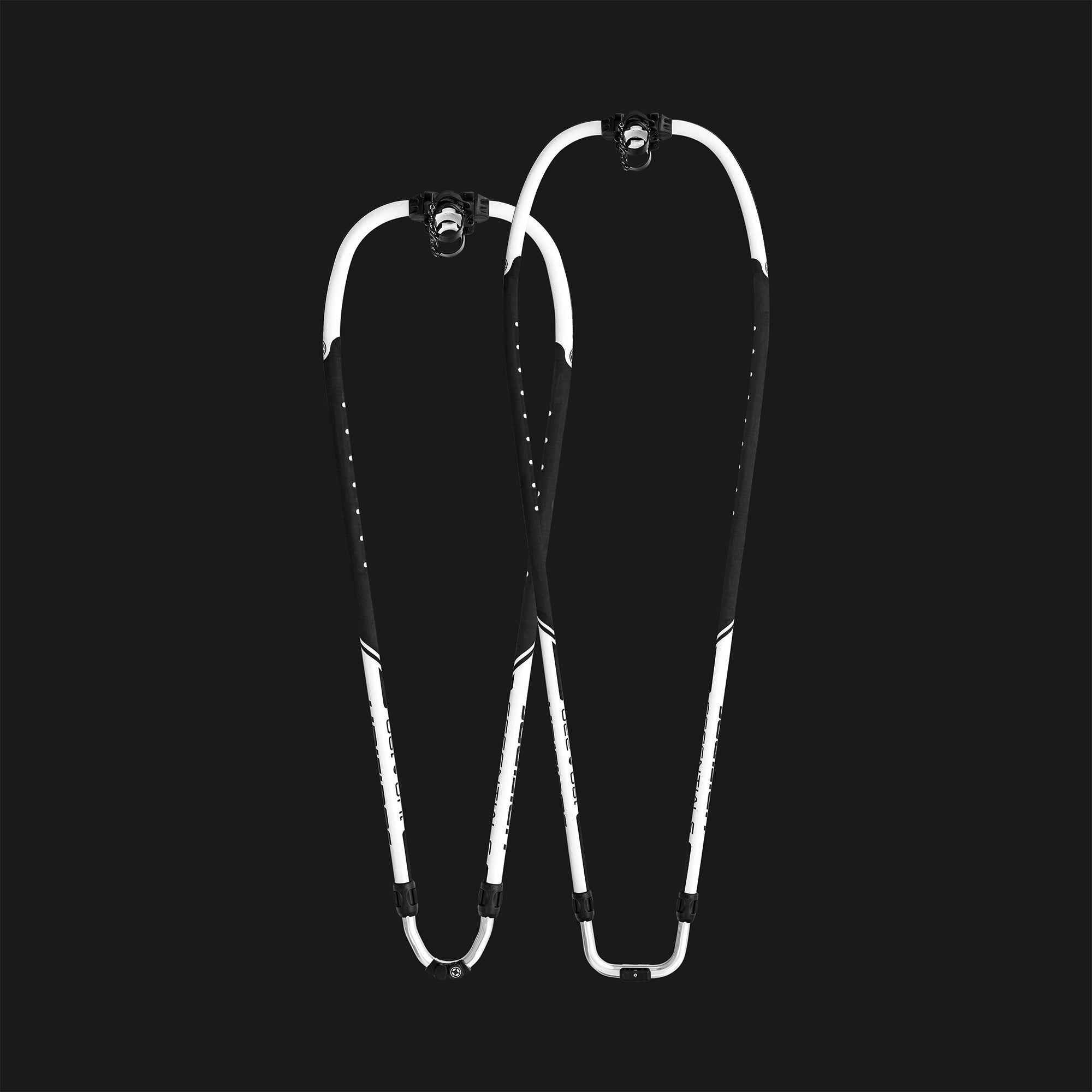
Essentials
A solid all-rounder with a modern curve and reinforced 29mm grip T8 alloy body—perfect for all conditions and skill levels.
From 199€

Essentials Tapered
Tapered grip from 26mm grip offers comfort and control. Ideal for wave, freeride, and freerace sessions.
From 219€
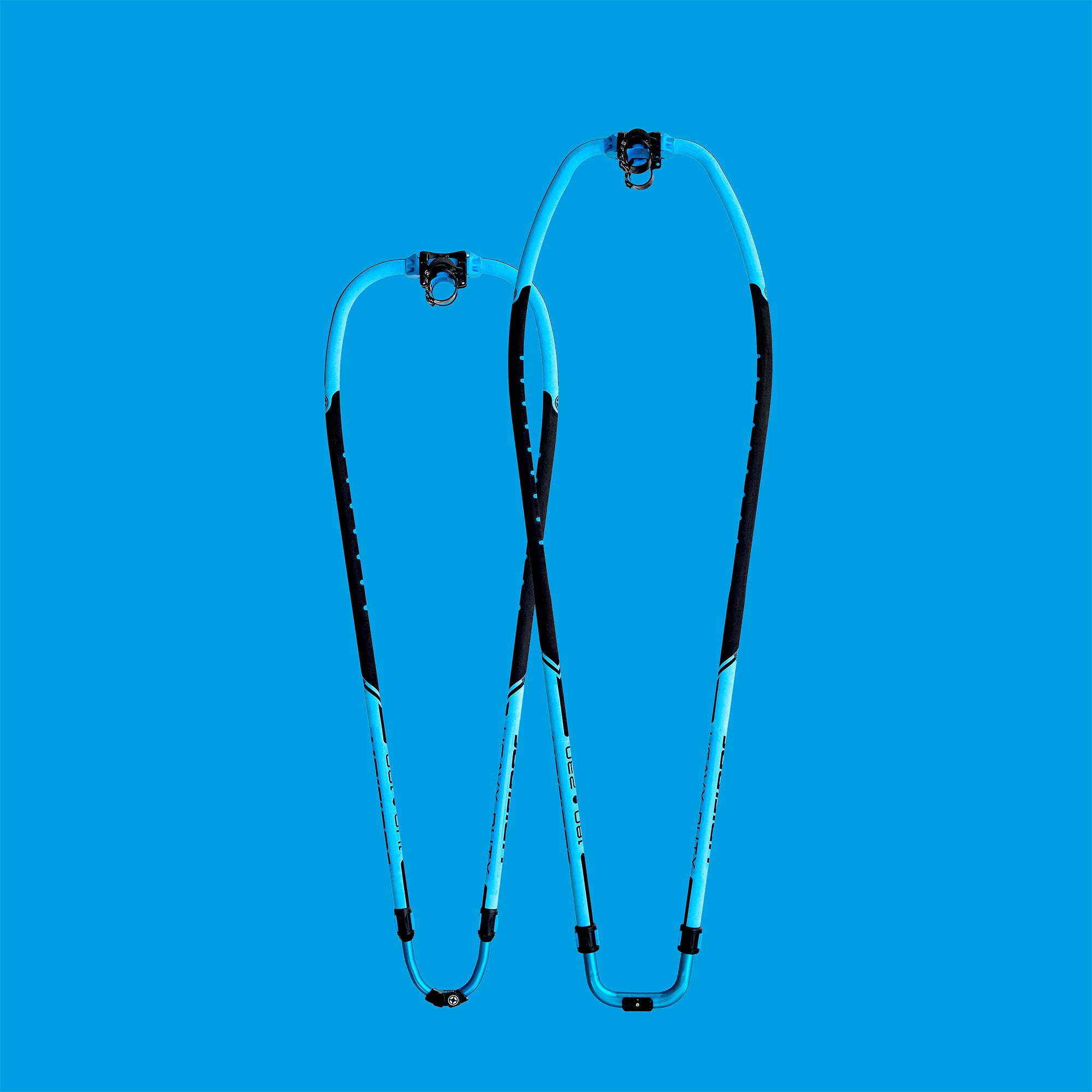
HD
Extra tough with thicker walls for heavy-duty use. Built to take a beating and keep performing.
From 239€
Unifiber Booms: Designed for Every Sailor
ESSENTIALS, HD, ELITE
Unifiber offers three distinct boom ranges to suit every need and budget:
- Essentials: Affordable aluminum booms perfect for budget-conscious users.
- Heavy Duty (HD): Durable aluminum and carbon booms built to withstand the toughest conditions.
- Elite: High-performance carbon booms engineered for uncompromising top-tier performance.
We also provide specialized booms for kids and windsurfing schools, ensuring everyone can enjoy the thrill of windsurfing with confidence.
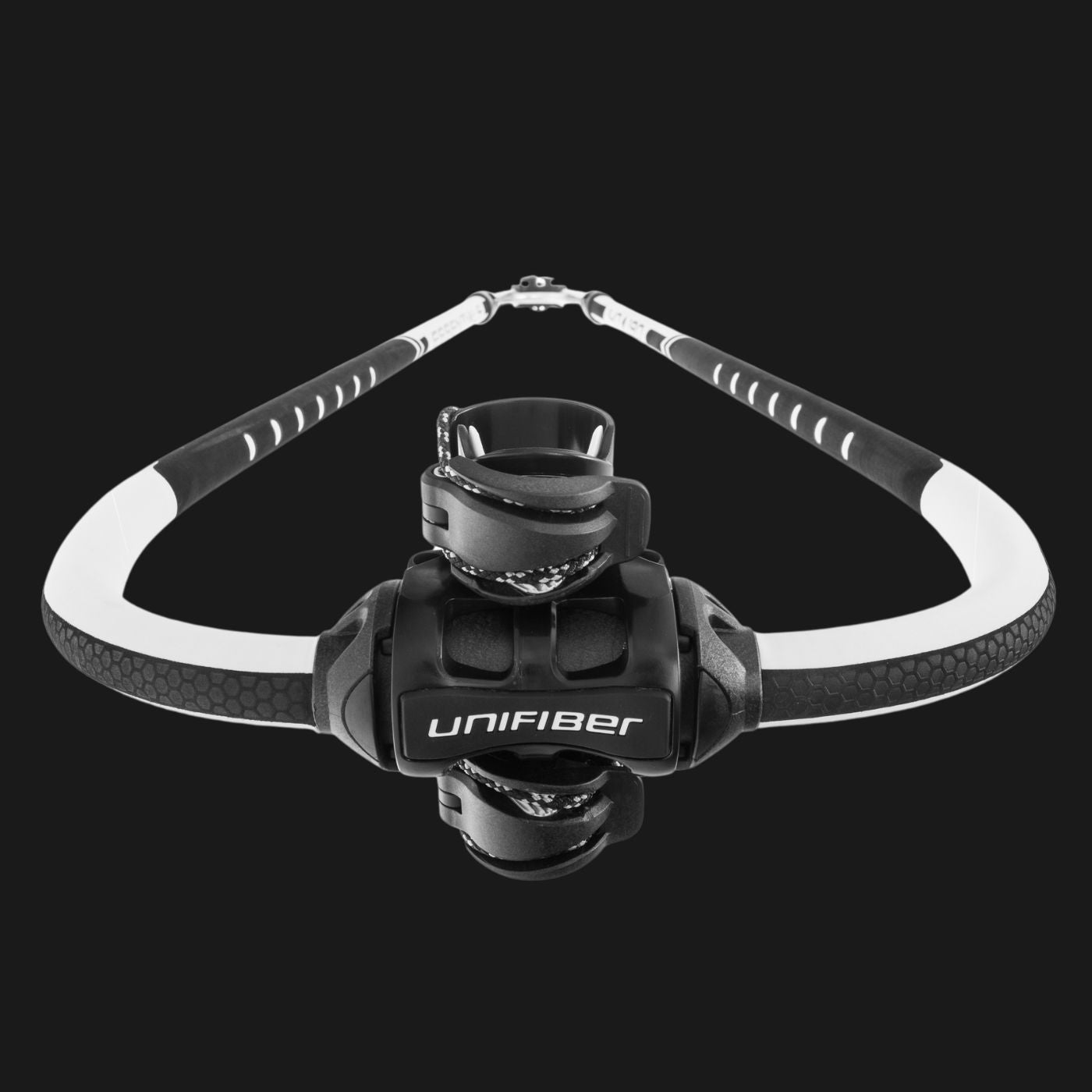
Essentials Aluminum Booms
Our Essentials booms deliver reliable performance and durability at a budget-friendly price point.
Built with quality aluminum construction, they're the perfect choice for recreational sailors and those starting their windsurfing journey.
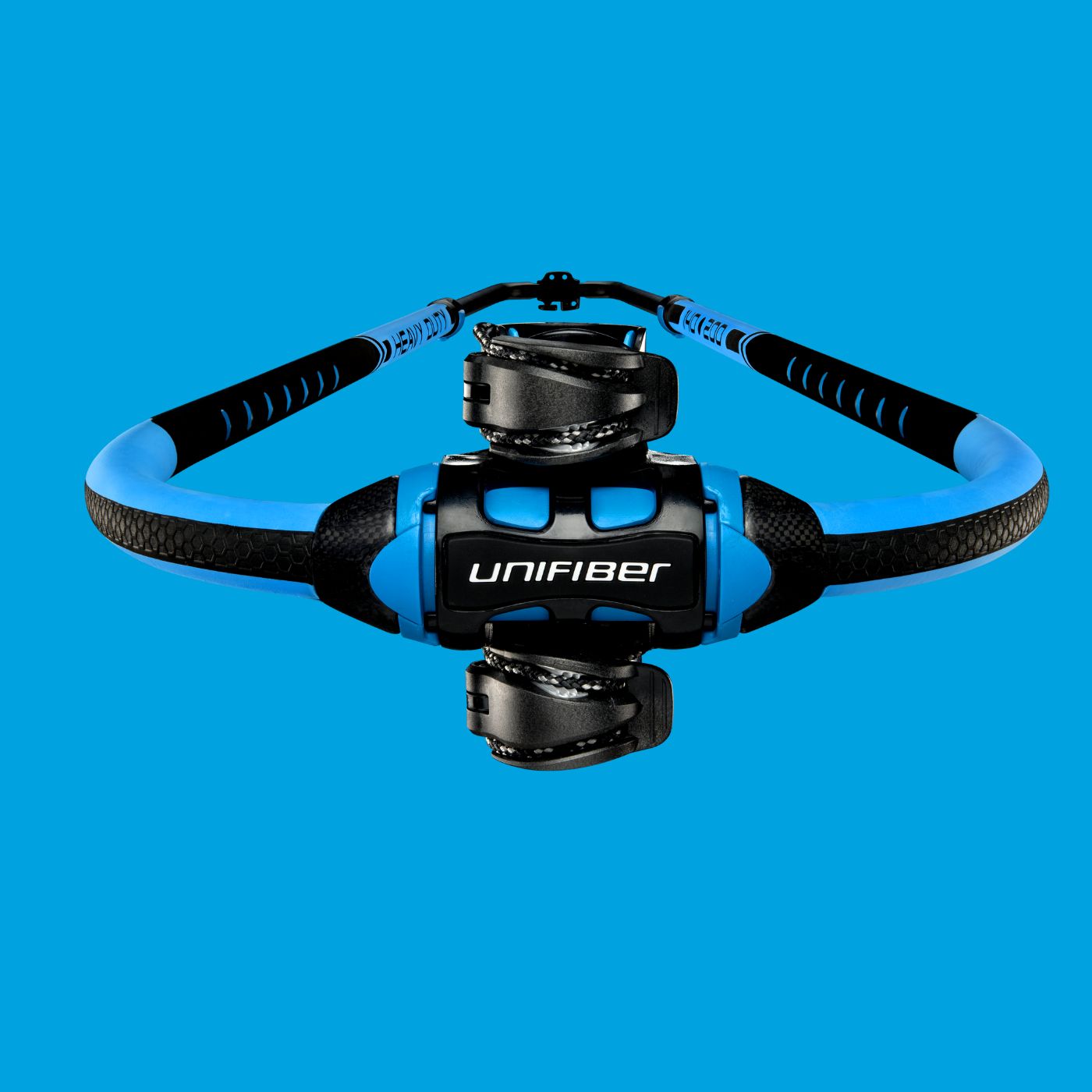
Heavy Duty (HD) Booms
Our HD booms are engineered to deliver exceptional strength and stability, providing the reliability you need in the most demanding conditions.
Available in both reinforced aluminum and specialized carbon construction, they're the perfect choice for sailors who prioritize durability without compromising performance.
Boom Head
At the heart of every Unifiber boom is a robust and secure boom head – the critical connection between rig and rider. Unifiber’s heads are engineered for a tight fit, minimal play, and easy on-the-water adjustment. The result? Direct power transfer and improved rig stability, session after session.
Learn More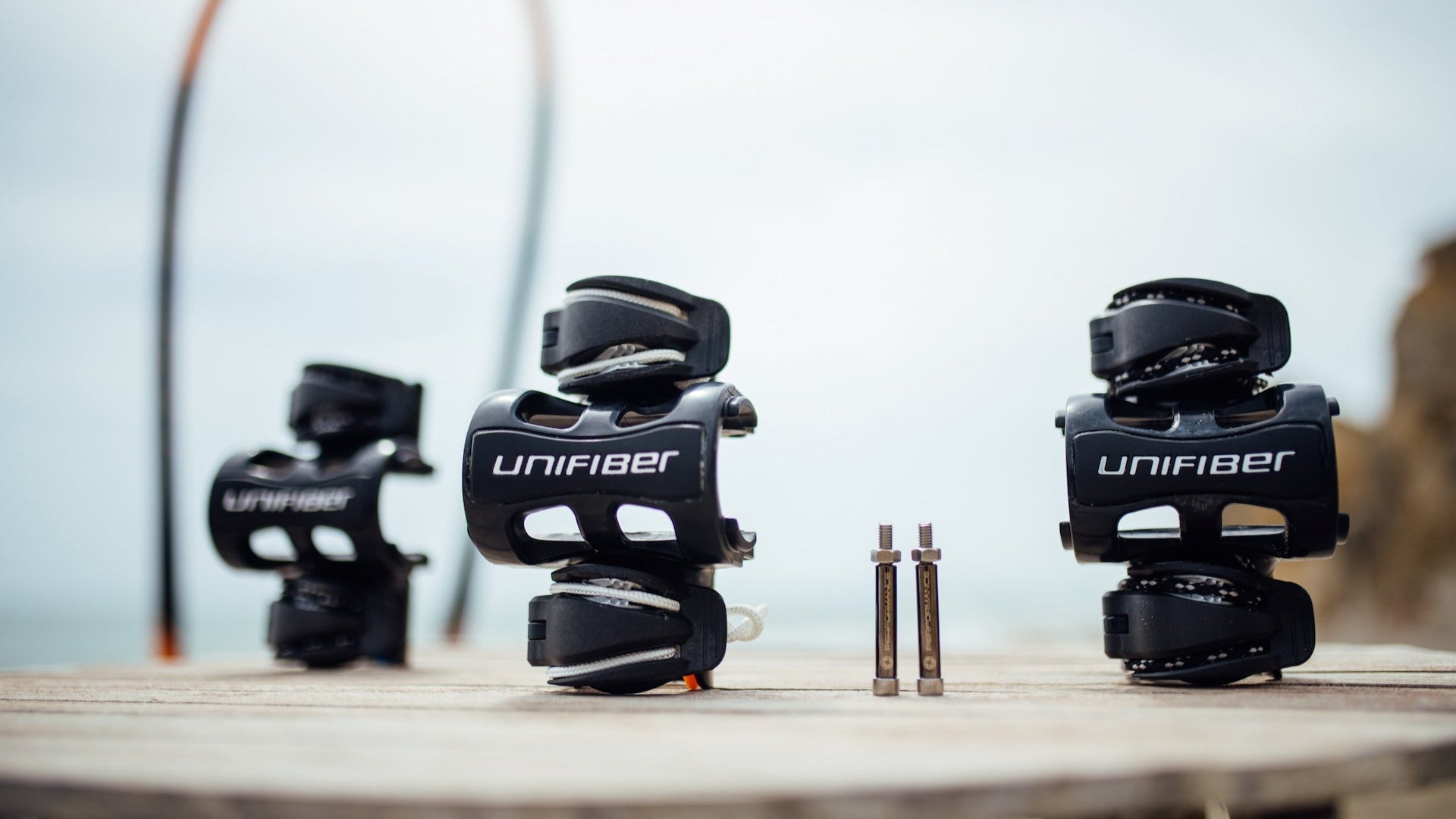
Double Lever Boom Head – Secure & Effortless
Unifiber’s double lever system on the boom head provides a strong, evenly distributed clamp around the mast, ensuring a secure and stable fit without excessive force.
Performance Bolts
Unifiber’s boom head performance bolts ensure a rock-solid connection between boom and mast – reducing flex, increasing power transfer, and boosting rig stability; standard on HD and Elite models, optional on Essential.
Nylon/Delrin blended Shell
Durable Nylon blended with Delrin boom head shell for high impact resistance, long-term stiffness, and reliable performance under load – with excellent UV and temperature stability.
When performance is everything, Elite is the answer
Elite Series
Experience Uncompromising Performance
Meet our flagship Elite carbon booms—engineered for maximum stiffness and minimum weight. Designed to deliver superior power transfer and precise sail control, Elite booms are the ultimate choice for competitive sailors and those who demand the absolute best.
When responsiveness, durability, and advanced sailing dynamics are non-negotiable, Elite delivers.
Shop NowFor those who push limits, HD delivers.
HD Series
When Durability Matters Most
Our HD booms are built to rise to the challenge. Available in reinforced aluminum and impact-resistant carbon construction, these heavy-duty performers feature increased wall thickness and specialized layups for unmatched strength.
Engineered to withstand the toughest conditions while maintaining exceptional performance, HD booms are the ultimate choice for sailors who demand both strength and reliability.
Shop NowBuilt to perform, designed to last
Essentials Series
Every windsurfer remembers their first boom—the one that carried them through early planing attempts, powered their first turns, and survived inevitable beach tumbles. That’s the spirit of our Essentials range.
We crafted these booms for riders who value straightforward performance. The T8 alloy construction strikes the perfect balance: lightweight enough for easy handling, yet robust enough to shrug off impacts. Modern curves distribute load evenly
Shop NowWhy Choose Unifiber Booms?
FAQs
Because none of us have unlimited budgets, but we still demand the best from our gear!
Unifiber booms come in a wide range of outline, tail width, grip diameter, tube shape, and more. Our selection is the widest available and offers excellent value.
We won’t be beaten on our balance of price, quality, and performance—all of which ensure the most fun and enjoyable windsurfing experiences
How to choose between Carbon or aluminum Boom ?
The choice between carbon and aluminium booms primarily comes down to budget and performance preferences.
Carbon booms are significantly stiffer and more durable, providing superior responsiveness and power transfer, but come at a higher price point compared to the more affordable and reliable aluminium options.
What is a monocoque Boom ?
A monocoque boom is a windsurfing boom built as a single, continuous unit, offering increased rigidity, strength, and durability compared to traditional booms made of separate components.
Why choose a wide boom Tail ?
Windsurfers, particularly wave sailors and high-performance racers, often prefer booms with wider tails. There are several key benefits to using a wider boom tail:
- Better control in onshore wave conditions: The wider tail helps prevent the sail from folding over the boom, providing improved control and stability when riding waves.
- More efficient power transfer: For speed and racing applications, a wider tail allows the sail to extend further without distortion, resulting in more efficient power transfer to the board.
- Enhanced adjustability: Wider boom tails often accommodate adjustable outhaul systems, enabling quick and easy trimming of the sail's shape and power delivery.
Overall, the wider boom tail design offers windsurfers increased performance, control, and versatility - making it a popular choice for both wave sailing and high-speed disciplines.
What's a C Shape Boom ?
A C-shape boom refers to a windsurfing boom design that features a curved or "C-shaped" body, as opposed to a more traditional straight or "regular" shape.
The C-shape boom provides a more ergonomic hand position, allowing the rider's lead arm to maintain a more natural wrist angle during sailing, especially during maneuvers like jibing. This improved hand position can make certain windsurfing techniques and movements more comfortable and efficient for the rider.
What does 1 Year Unconditional + 1-Year Conditional warranty cover?
Warranty is valid 2 years after date of purchase. When making a warranty claim in the first year the product is unconditionally warranted.
When making a warranty claim in the 2nd year the product must have clearly suffered from a manufacturer error.
Can I purchase, boom parts?
Yes, we maintain a reliable stock of spare components.
Boom Head Mast Diameter Compatibility
When buying a new boom check for mast diameter compatibility. Most booms will work on both SDM and RDM masts.
Often this is achieved with a separate adapter for RDM masts.
There are also boomheads that are dedicated for use with RDM or SDM masts only. For SDM only booms there are universal adaptors or mast shims that allow for use with RDM masts.
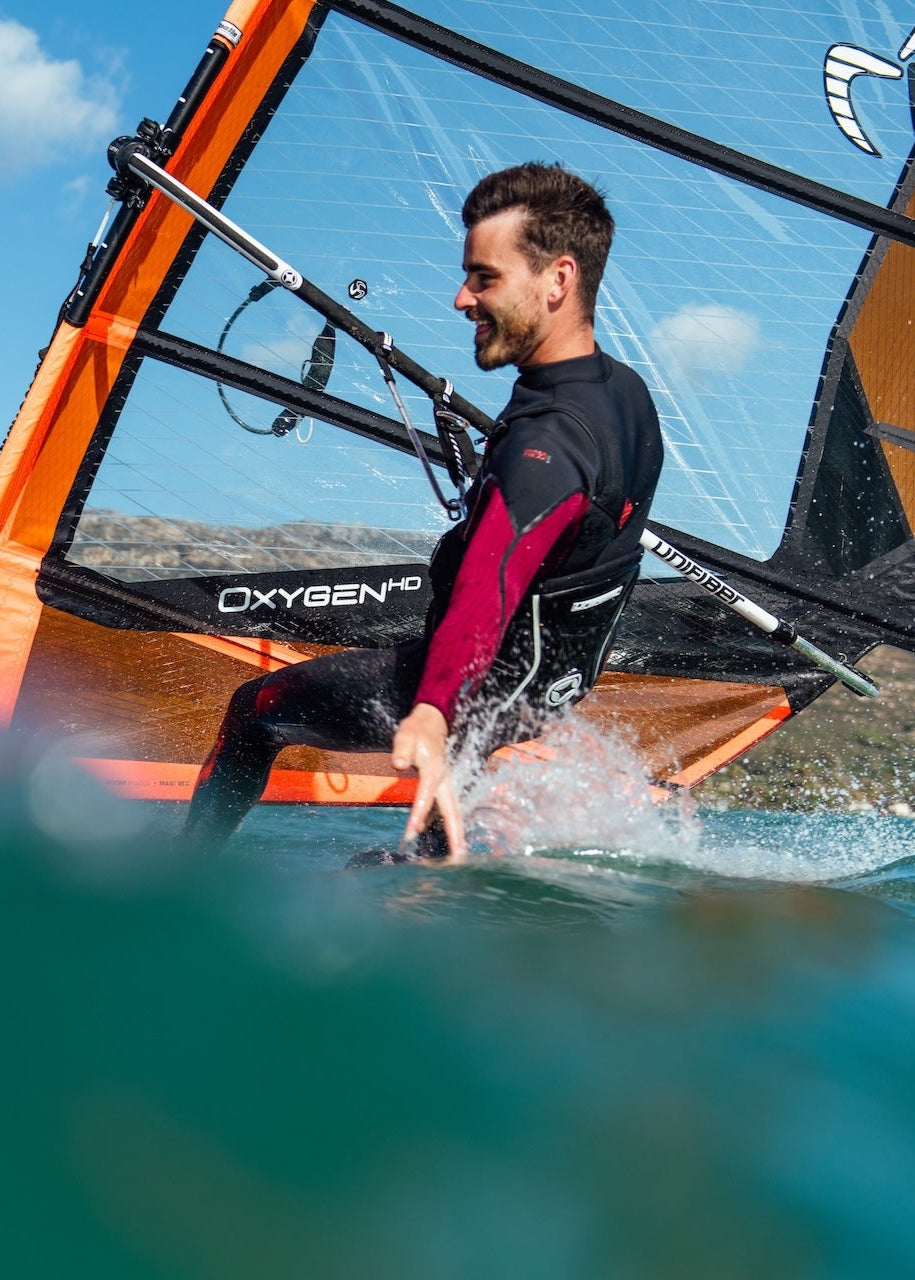
In 2019, Unifiber revolutionized the windsurfing world with the Modular Boom Concept. Instead of seeing a boom as a single product, we broke it down into three interchangeable parts: boomhead, body, and tail. This modular approach offers unique advantages:
- Cost-Effective Repairs: If a part breaks, just replace it—no need to buy a whole new boom. This saves you money and reduces environmental waste.
- Flexible Configurations: Need two booms? Buy one and a half! For example, if you own a 190-240 ELITE boom and upgrade to a bigger sail, simply add a 220-270 tail to extend its range. Or, use the same boomhead across multiple booms.
- Customizable Performance: Mix and match parts to suit your style. Pair the durability of an HD boom body with the lightweight performance of an ELITE tail for a personalized setup.
- Eco-Friendly Shipping: Traditional booms are bulky and inefficient to ship. By disassembling the boomhead, body, and tail, we optimize space, reducing shipping costs and environmental impact.
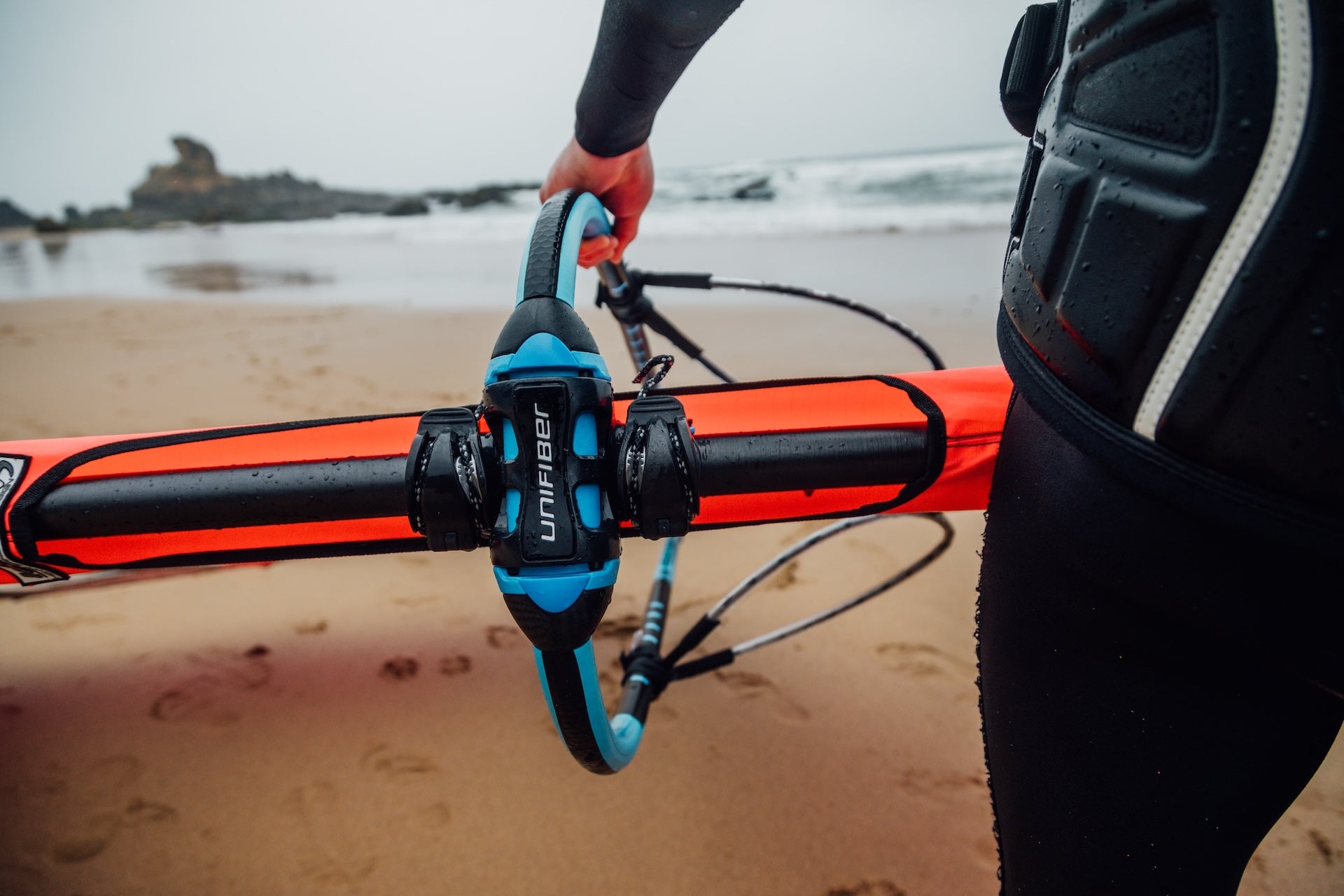
The Boomhead: Where Precision Meets Performance
The boomhead is the heart of your rig, transmitting all forces—wind, water shocks, and your movements—through the mast. A poorly designed boomhead can compromise even the best boom tubes.
At Unifiber, we spent hundreds of R&D hours perfecting the boomhead. Here’s what makes ours stand out:
- Adaptive Fit: Instead of being overly stiff (which can damage your mast), our boomhead molds to the mast’s shape. This ensures even force distribution, protecting your mast and enhancing your control.
- Direct Feedback: With no play, you’ll feel every force acting on your gear, giving you precise control and confidence in any condition.
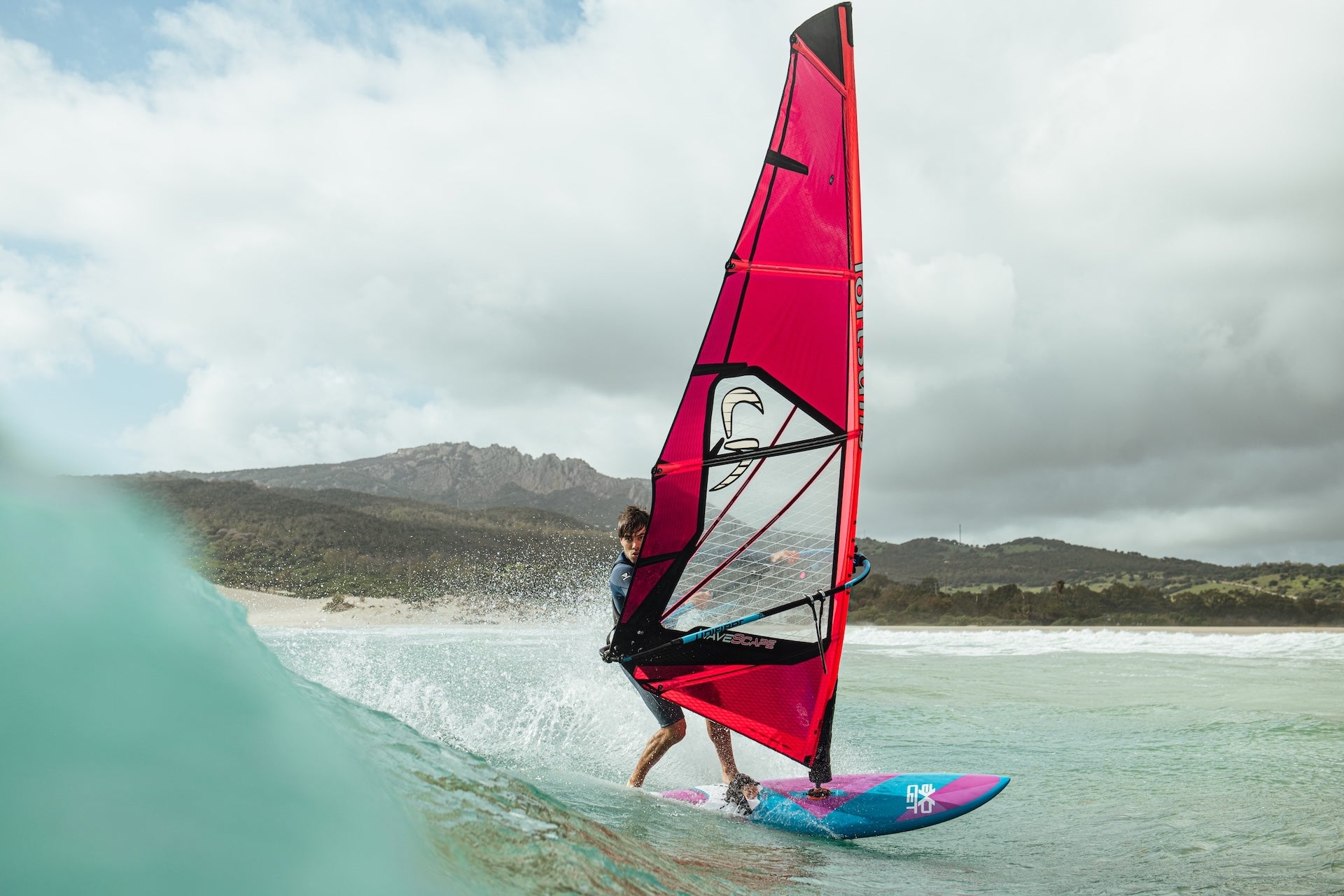
The boom tube diameter directly influences structural rigidity and ergonomic factors. Larger diameter tubes increase the second moment of area, resulting in superior torsional stiffness and enhanced performance characteristics. However, this presents an inverse relationship with grip ergonomics - larger diameters increase forearm muscle fatigue due to greater hand span requirements and elevated grip force demands.
The grip cross-section geometry significantly affects both mechanical properties and user interface dynamics. While a round grip provides uniform radial stiffness distribution, the V-grip design optimizes horizontal plane rigidity. This horizontal stiffness is crucial as it aligns with both the primary force vector of sail drive and the perpendicular pumping force application. The Oval/V-grip configuration in modern carbon composite booms represents an engineered compromise between mechanical efficiency and biomechanical requirements, offering optimal stiffness-to-comfort ratios in the critical load directions.
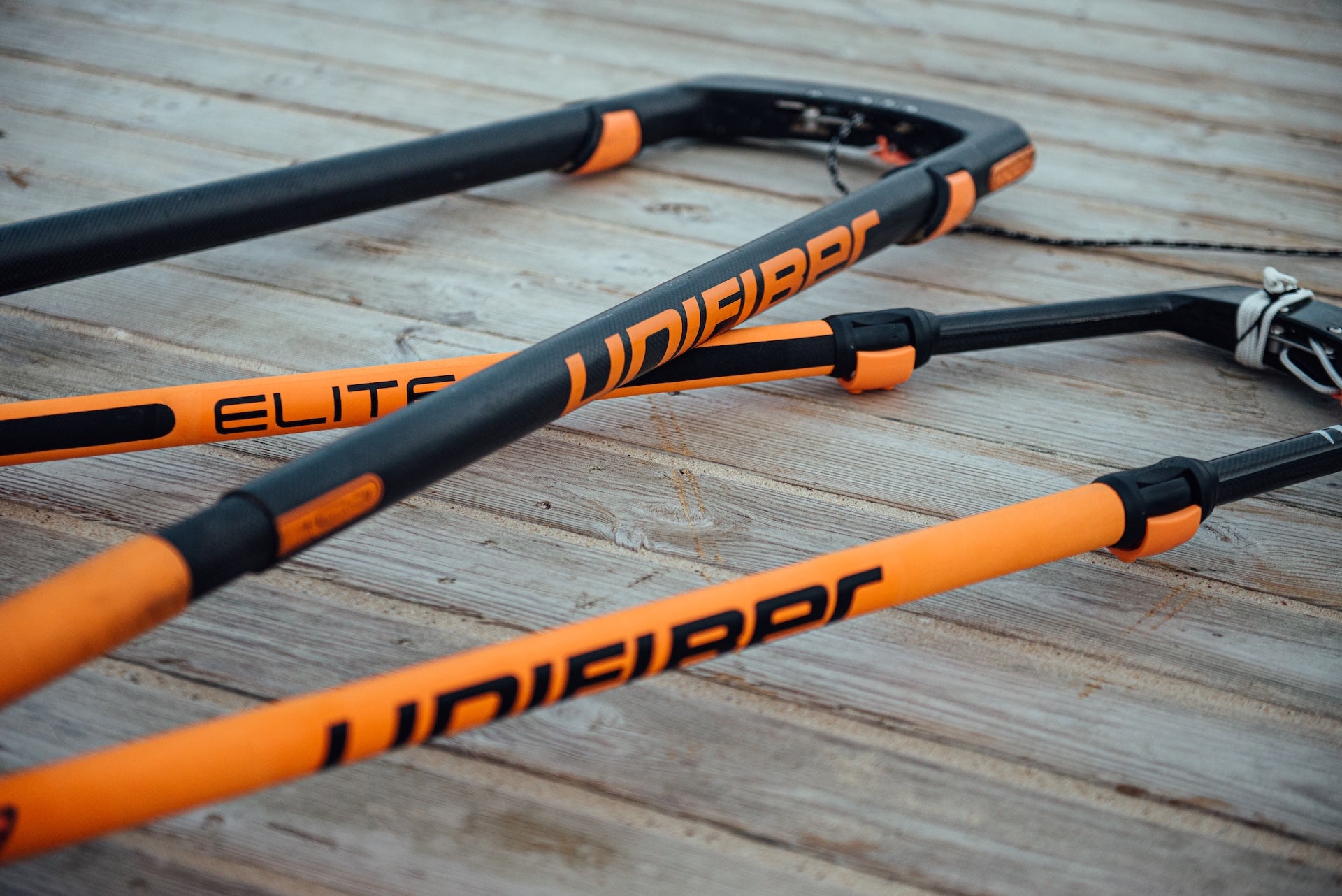
The boom tail width becomes a critical parameter when scaling up sail dimensions, particularly for sails ≥6.5m².
The relationship between tail width and sail performance manifests through profile integrity maintenance under varying outhaul tension conditions.
Wide tail configurations provide these key advantages:
- Maintain proper sail profile geometry under reduced outhaul tension scenarios
- Preserve designed camber distribution in light wind conditions
- Support optimal aerodynamic efficiency
- Prevent profile deformation that could compromise sail structural integrity
Conversely, narrow tail designs when paired with larger sail areas can:
- Induce undesired profile distortion
- Create sail shape constraints that reduce performance
- Generate localized stress concentrations affecting sail longevity
- Compromise the designed draft position
Modern wave sails are also designed to have quite a deep profile, so it is wise to consider tail width on smaller booms too.

The traditional "regular" boom shape dates back to when booms were made from two separate arms. Its main advantage is a minimal bend radius, making it easier to manufacture from materials like aluminum or wood. However, it forces the front hand (mast hand) into a slightly bent wrist position.
With the rise of monocoque booms—now the standard—the "C" shape became popular. This design offers ergonomic benefits, allowing the lead arm to maintain a more natural wrist position. It improves comfort not only during straight-line sailing but also for gybing and other maneuvers.
Today, the regular shape is outdated, and most booms follow the "C" shape.
However, variations exist—larger booms often adopt a hybrid shape between "C" and regular, as the natural hand position shifts further from the mast.
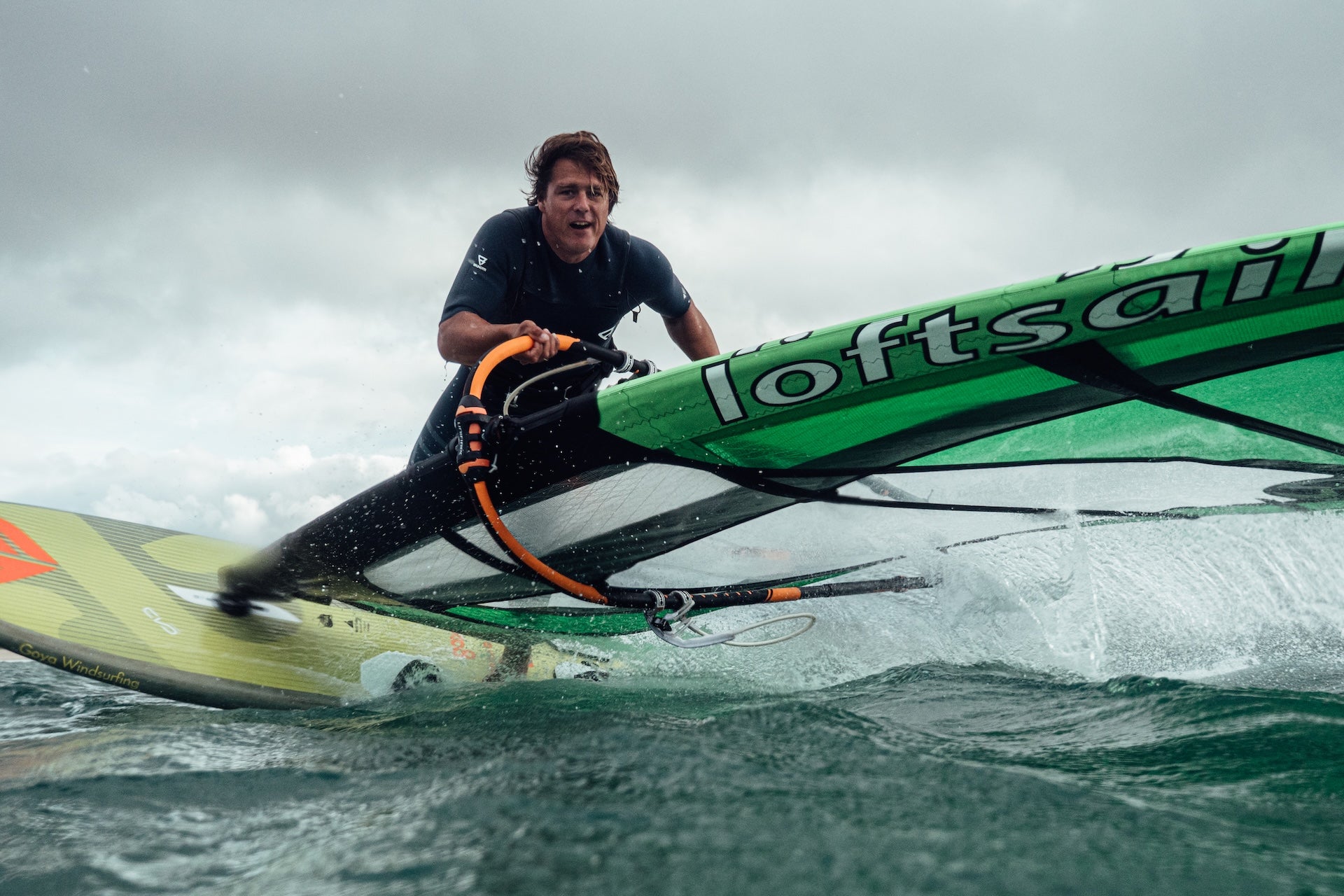
There are two main options for the boom tail:
A larger diameter tail that goes outside the boom body, or a smaller diameter tail that goes inside.
- Tail Inside – A smaller diameter tail slides inside the boom body. This design allows the length adjustment lock to be positioned at the end of the boom body, making adjustments simple. However, since the tail is narrower, it is less stiff.
- Tail Outside – A larger diameter tail fits over the boom body, increasing stiffness. The downside is that aligning the holes for the length adjustment lock can sometimes be tricky.
For shorter sized booms the tail outside option is not offered, as the tail would interfere with the backhand during normal sailing
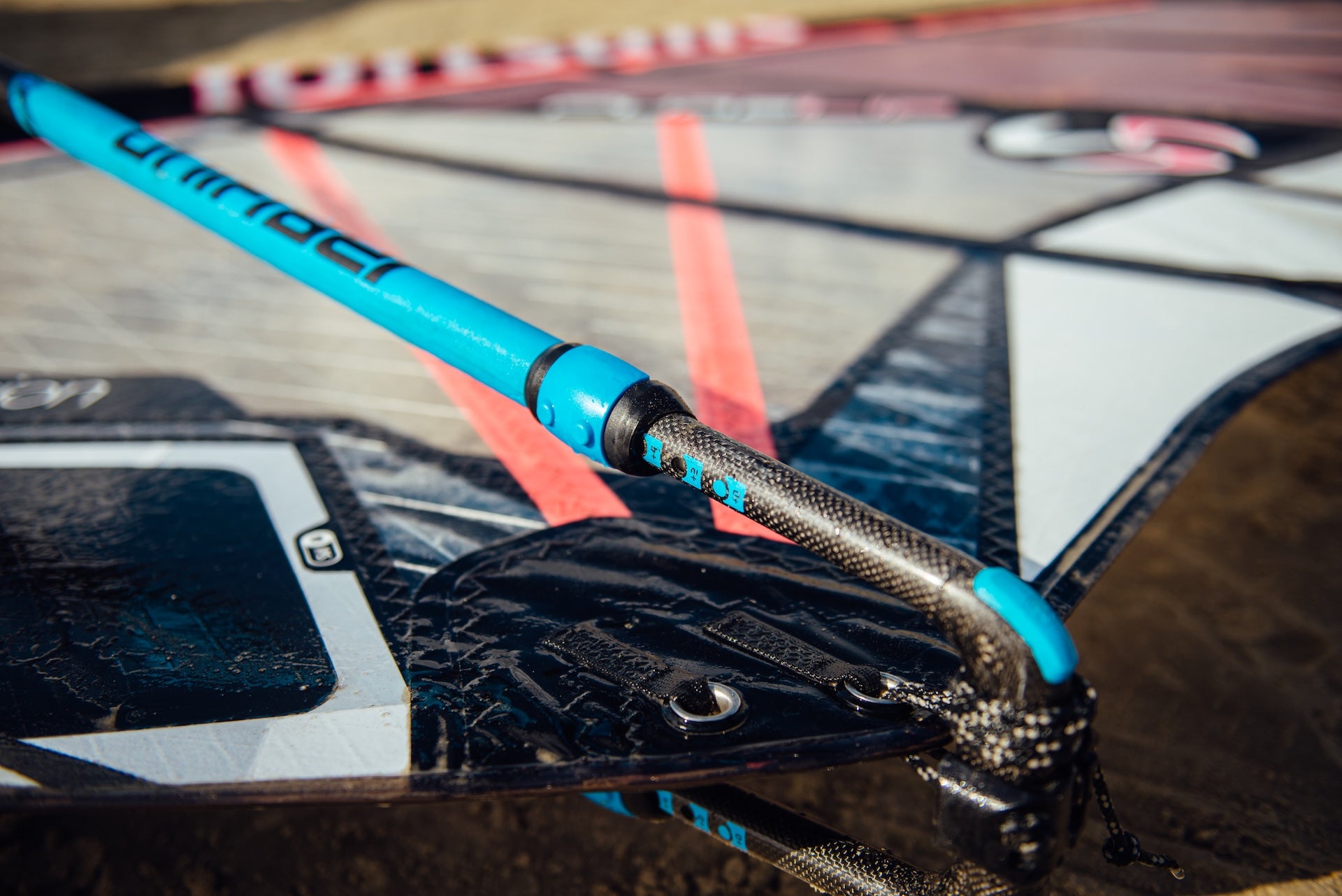
For quick rigging, the loop-loop-go (loop-to-loop) option is most convenient. This is the best choice for medium-sized and smaller sails, helping you get rigged and out on the water quickly!
The pulley option is ideal for booms with an adjustable outhaul system, making it a great feature for bigger sails and racing.

Most windsurf sails quote an outhaul setting The boom length setting should match the required range, but keep in mind that different sail manufacturers may have slight variations in their recommended measurements.
The actual setting also depends on conditions, boom height, and other factors.
- Using a boom at or near its minimum length increases stiffness, improving rig performance. In contrast, extending a boom closer to its maximum range reduces stiffness.
- For this reason, most Unifiber aluminium booms extend up to 50cm, while the inherently stiffer Unifiber carbon booms can extend up to 60cm.
In 2019, Unifiber revolutionized the windsurfing world with the Modular Boom Concept. Instead of seeing a boom as a single product, we broke it down into three interchangeable parts: boomhead, body, and tail. This modular approach offers unique advantages:
- Cost-Effective Repairs: If a part breaks, just replace it—no need to buy a whole new boom. This saves you money and reduces environmental waste.
- Flexible Configurations: Need two booms? Buy one and a half! For example, if you own a 190-240 ELITE boom and upgrade to a bigger sail, simply add a 220-270 tail to extend its range. Or, use the same boomhead across multiple booms.
- Customizable Performance: Mix and match parts to suit your style. Pair the durability of an HD boom body with the lightweight performance of an ELITE tail for a personalized setup.
- Eco-Friendly Shipping: Traditional booms are bulky and inefficient to ship. By disassembling the boomhead, body, and tail, we optimize space, reducing shipping costs and environmental impact.
The Boomhead: Where Precision Meets Performance
The boomhead is the heart of your rig, transmitting all forces—wind, water shocks, and your movements—through the mast. A poorly designed boomhead can compromise even the best boom tubes.
At Unifiber, we spent hundreds of R&D hours perfecting the boomhead. Here’s what makes ours stand out:
- Adaptive Fit: Instead of being overly stiff (which can damage your mast), our boomhead molds to the mast’s shape. This ensures even force distribution, protecting your mast and enhancing your control.
- Direct Feedback: With no play, you’ll feel every force acting on your gear, giving you precise control and confidence in any condition.
The boom tube diameter directly influences structural rigidity and ergonomic factors. Larger diameter tubes increase the second moment of area, resulting in superior torsional stiffness and enhanced performance characteristics. However, this presents an inverse relationship with grip ergonomics - larger diameters increase forearm muscle fatigue due to greater hand span requirements and elevated grip force demands.
The grip cross-section geometry significantly affects both mechanical properties and user interface dynamics. While a round grip provides uniform radial stiffness distribution, the V-grip design optimizes horizontal plane rigidity. This horizontal stiffness is crucial as it aligns with both the primary force vector of sail drive and the perpendicular pumping force application. The Oval/V-grip configuration in modern carbon composite booms represents an engineered compromise between mechanical efficiency and biomechanical requirements, offering optimal stiffness-to-comfort ratios in the critical load directions.
The boom tail width becomes a critical parameter when scaling up sail dimensions, particularly for sails ≥6.5m².
The relationship between tail width and sail performance manifests through profile integrity maintenance under varying outhaul tension conditions.
Wide tail configurations provide these key advantages:
- Maintain proper sail profile geometry under reduced outhaul tension scenarios
- Preserve designed camber distribution in light wind conditions
- Support optimal aerodynamic efficiency
- Prevent profile deformation that could compromise sail structural integrity
Conversely, narrow tail designs when paired with larger sail areas can:
- Induce undesired profile distortion
- Create sail shape constraints that reduce performance
- Generate localized stress concentrations affecting sail longevity
- Compromise the designed draft position
Modern wave sails are also designed to have quite a deep profile, so it is wise to consider tail width on smaller booms too.
The traditional "regular" boom shape dates back to when booms were made from two separate arms. Its main advantage is a minimal bend radius, making it easier to manufacture from materials like aluminum or wood. However, it forces the front hand (mast hand) into a slightly bent wrist position.
With the rise of monocoque booms—now the standard—the "C" shape became popular. This design offers ergonomic benefits, allowing the lead arm to maintain a more natural wrist position. It improves comfort not only during straight-line sailing but also for gybing and other maneuvers.
Today, the regular shape is outdated, and most booms follow the "C" shape.
However, variations exist—larger booms often adopt a hybrid shape between "C" and regular, as the natural hand position shifts further from the mast.
There are two main options for the boom tail:
A larger diameter tail that goes outside the boom body, or a smaller diameter tail that goes inside.
- Tail Inside – A smaller diameter tail slides inside the boom body. This design allows the length adjustment lock to be positioned at the end of the boom body, making adjustments simple. However, since the tail is narrower, it is less stiff.
- Tail Outside – A larger diameter tail fits over the boom body, increasing stiffness. The downside is that aligning the holes for the length adjustment lock can sometimes be tricky.
For shorter sized booms the tail outside option is not offered, as the tail would interfere with the backhand during normal sailing
For quick rigging, the loop-loop-go (loop-to-loop) option is most convenient. This is the best choice for medium-sized and smaller sails, helping you get rigged and out on the water quickly!
The pulley option is ideal for booms with an adjustable outhaul system, making it a great feature for bigger sails and racing.
Most windsurf sails quote an outhaul setting The boom length setting should match the required range, but keep in mind that different sail manufacturers may have slight variations in their recommended measurements.
The actual setting also depends on conditions, boom height, and other factors.
- Using a boom at or near its minimum length increases stiffness, improving rig performance. In contrast, extending a boom closer to its maximum range reduces stiffness.
- For this reason, most Unifiber aluminium booms extend up to 50cm, while the inherently stiffer Unifiber carbon booms can extend up to 60cm.








